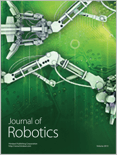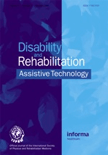
International Journal of Social Robotics
Scope & Guideline
Pioneering Ethical Discussions in Robotics and Automation
Introduction
Aims and Scopes
- Socially Assistive Robotics:
Research on robots designed to assist individuals in social contexts, particularly in healthcare and education, enhancing emotional and social support. - Human-Robot Interaction (HRI):
Exploration of the dynamics between humans and robots, focusing on trust, acceptance, and the psychological impacts of robotic presence. - Ethics and Social Implications:
Investigating the ethical considerations surrounding the deployment of social robots, including issues of privacy, trust, and moral status. - Developmental and Evaluation Methodologies:
Methodological advancements in evaluating robot performance and user interaction, including experimental studies and qualitative research. - Cognitive and Emotional Robotics:
Research on enabling robots to understand and respond to human emotions and cognitive states, enhancing their social capabilities. - Design and User-Centered Approaches:
Focus on participatory design methods that involve users in the development process, ensuring that robots meet the needs and expectations of diverse populations.
Trending and Emerging
- Telepresence Robots:
An increasing number of studies focus on telepresence robots, exploring their implications for remote interaction in healthcare and education, particularly in the context of social distancing. - Ethical Frameworks in Robotics:
There is a growing emphasis on developing ethical frameworks that guide the design and deployment of social robots, addressing concerns about autonomy, privacy, and moral responsibility. - Robotics for Mental Health and Well-Being:
Research is trending towards the use of social robots as tools for mental health interventions, particularly in supporting individuals with autism and the elderly. - User-Centric Design and Personalization:
A shift towards personalized robot interactions based on individual user preferences and needs, emphasizing the importance of adaptive technologies. - Interdisciplinary Approaches:
Emerging collaboration between robotics and fields such as psychology, sociology, and ethics, leading to a more holistic understanding of human-robot interaction.
Declining or Waning
- Purely Technological Focus:
There has been a noticeable reduction in papers that solely emphasize technical advancements in robotics without considering social or ethical implications. - Robots in Traditional Industrial Applications:
Research on the use of robots in traditional industrial settings has decreased, as the focus shifts towards more socially oriented applications. - Stereotypical Representations of Robots:
The exploration of gendered or stereotypical roles for robots has waned, reflecting a growing awareness of the need for diverse and inclusive representations in robotics. - Animal-like Robots:
There is less emphasis on the development and study of animal-like robots, as the focus has moved towards humanoid and service-oriented robots. - Robots in Entertainment:
The use of robots specifically for entertainment purposes has seen a decline, as more research is directed towards practical applications in healthcare and education.
Similar Journals

ADVANCED ROBOTICS
Driving Excellence in Robotic SolutionsADVANCED ROBOTICS is a premier journal published by Taylor & Francis Ltd that has been at the forefront of robotics research since its inception in 1986. With an esteemed ISSN of 0169-1864 and E-ISSN of 1568-5535, this journal offers a unique platform for disseminating high-quality research across diverse domains within the robotics field, encompassing applications in Computer Science, Control and Systems Engineering, Hardware and Architecture. Ranked in the Q2 quartile across multiple categories in 2023, ADVANCED ROBOTICS maintains a reputable standing in the academic community, emphasizing its commitment to advancing knowledge and innovation. Although not an Open Access publication, the journal’s access options ensure that subscribers can explore the latest findings and engage with prominent experts in the field, facilitating an enriching exchange of ideas. Researchers, professionals, and students alike will find ADVANCED ROBOTICS an invaluable resource for keeping abreast of developments and contributing to the ever-evolving landscape of robotics.

Journal of Robotics Networking and Artificial Life
Connecting Ideas, Advancing Robotics.Journal of Robotics Networking and Artificial Life, published by ALife Robotics Corp Ltd, stands at the forefront of interdisciplinary research at the intersection of robotics, artificial intelligence, and networking, representing a vital resource for scholars and practitioners in these rapidly evolving fields. Established as an Open Access journal since 2014, it provides unrestricted access to cutting-edge research and innovative methodologies, fostering collaboration and knowledge dissemination globally. Although it currently holds a Q4 ranking in both Artificial Intelligence and Computer Networks and Communications, its commitment to advancing knowledge through robust peer review and dedicated publication practices positions it as a growing contender within these spheres. With a publication history covering the years from 2019 to 2023, this journal emphasizes the importance of novel insights and cross-disciplinary approaches. Researchers, professionals, and students are encouraged to contribute to and engage with the evolving discourse in robotics and artificial intelligence, making the Journal of Robotics Networking and Artificial Life an essential addition to their academic and professional resources.

Journal of Robotics
Exploring the Frontiers of Robotic EngineeringJournal of Robotics, published by HINDAWI LTD, is a premier open-access journal dedicated to the rapidly evolving field of robotics. With its ISSN 1687-9600 and E-ISSN 1687-9619, the journal has been an essential resource for researchers, professionals, and students since its establishment in 2009. Based in England, the journal not only aims to disseminate cutting-edge research but also provides a platform for critical discussions on the latest advancements in robotics. Recognized for its quality, the journal holds a Q2 ranking in Computer Science (miscellaneous) and a Q3 ranking in Control and Systems Engineering for the year 2023. Spanning topics from autonomous systems to robotic engineering, the Journal of Robotics is indexed in various esteemed databases, making it a credible source for innovative research. The journal's commitment to open access ensures that its research reaches a broad audience, encouraging collaboration and driving forward the boundaries of technology and engineering.

Soft Robotics
Shaping the Future of Human-Robot Interaction with Soft Robotics.Soft Robotics, published by MARY ANN LIEBERT, INC, stands as a leading journal dedicated to advancing the field of soft robotics, which merges insights from artificial intelligence, biophysics, and control systems engineering to innovate in areas such as bio-inspired design, human-robot interaction, and flexible robotics. With a distinguished Q1 ranking in multiple categories, including Artificial Intelligence, Biophysics, and Control and Systems Engineering, this journal places itself at the cutting edge of interdisciplinary research, boasting impressive Scopus rankings that reflect its rigorous scholarship and influential contributions to the scientific community. Although it is not an open access journal, it provides valuable insights and findings for researchers, professionals, and students eager to explore the transformative potential of soft robotics in practical applications. The journal has published continuously since its inception in 2014, and will continue to converge between theory and application through 2024, emphasizing its commitment to expanding the frontiers of knowledge in this dynamic field. For those engaged in the exploration of robotics technologies shaped by soft materials and adaptive mechanisms, Soft Robotics is an essential resource that fuels innovation and discovery.

Frontiers in Neurorobotics
Connecting Minds: Where AI Meets Biomedical EngineeringFrontiers in Neurorobotics is a leading open access journal that bridges the fields of artificial intelligence and biomedical engineering, dedicated to advancing the understanding and application of neural mechanisms in robotics. Published by FRONTIERS MEDIA SA in Switzerland, this journal has been disseminating innovative research since its inception in 2007. With an aim to foster interdisciplinary collaboration and share cutting-edge findings, Frontiers in Neurorobotics holds a commendable position in the academic landscape, ranking in the Q2 category for both Artificial Intelligence and Biomedical Engineering as of 2023. Researchers will find it particularly valuable due to its broad scope, which encompasses everything from theoretical frameworks to practical applications in neurorobotics. The journal is committed to open access, ensuring that its contents are readily available to a global audience, thus enhancing visibility and engagement with trailblazing research in this dynamic field.

Disability and Rehabilitation-Assistive Technology
Exploring New Frontiers in Disability and RehabilitationDisability and Rehabilitation-Assistive Technology, published by Taylor & Francis Inc, is a leading journal dedicated to advancing research in the field of assistive technology, disability, and rehabilitation. With an ISSN of 1748-3107 and an E-ISSN of 1748-3115, this journal serves as a vital resource for researchers, clinicians, and professionals, providing high-quality, peer-reviewed articles that explore the latest innovations and methodologies in assistive technologies aimed at improving the quality of life for individuals with disabilities. The journal is recognized for its significant impact across multiple disciplines, achieving prestigious Q1 rankings in Rehabilitation and Speech and Hearing, and maintaining a solid position in Q2 across other relevant categories such as Biomedical Engineering and Orthopedics. As a collaborative platform for sharing knowledge and research findings, Disability and Rehabilitation-Assistive Technology plays a critical role in bridging the gap between technical advancements and practical applications in rehabilitation. Researchers and practitioners are encouraged to contribute and engage with the journal to enhance the collective understanding and efficacy of assistive technologies.

Frontiers in Robotics and AI
Exploring New Dimensions in Robotics and AI ResearchFrontiers in Robotics and AI is a leading journal dedicated to the exploration and dissemination of groundbreaking research in the fields of robotics and artificial intelligence. Published by FRONTIERS MEDIA SA in Switzerland, it has established itself as a vital resource for academics, professionals, and students since its inception in 2014. With an impressive Open Access model, the journal ensures that high-quality research is accessible to a global audience, fostering collaboration and innovation. The journal is recognized for its distinguished impact in the academic community, achieving Q2 quartile rankings in both Artificial Intelligence and Computer Science Applications as of 2023. It currently holds a solid position in Scopus rankings, with a rank of #123 out of 350 in Artificial Intelligence and #223 out of 817 in Computer Science Applications, reflecting its robust contribution to these dynamic disciplines. The journal's scope encompasses a wide range of topics, including but not limited to autonomous systems, machine learning, and human-robot interaction, making it an essential platform for innovative ideas and advanced research.

Industrial Robot-The International Journal of Robotics Research and Application
Shaping the Future of Industrial Robotics ResearchIndustrial Robot-The International Journal of Robotics Research and Application is a premier academic journal published by Emerald Group Publishing Ltd in the United Kingdom. Since its inception in 1973, the journal has established itself as a critical resource for the advancement of knowledge in the fields of robotics and automation. With an impressive Q2 ranking across several categories, including Computer Science Applications, Control and Systems Engineering, and Industrial and Manufacturing Engineering, it places itself among the top-tier journals in its domain. The journal aims to disseminate high-quality research that addresses contemporary challenges and innovations in robotics, thereby supporting both academic inquiry and practical applications in industry. Researchers, professionals, and students are encouraged to contribute to its mission, as it remains vital for those seeking to engage with the ever-evolving landscape of robotic technologies.

Robotics, published by MDPI in Switzerland, stands at the forefront of interdisciplinary research, focusing on the latest advancements in robotics, artificial intelligence, control systems, and mechanical engineering. As an Open Access journal since 2012, it aims to disseminate high-quality research and innovative findings to a global audience, promoting collaboration among researchers, professionals, and students alike. With a commendable impact reflected in its 2023 categorizations—including Q2 rankings in Artificial Intelligence and Control and Optimization, and a prestigious Q1 in Mechanical Engineering—the journal underscores its significance within the scientific community. Notably, it boasts impressive Scopus rankings, standing within the top 20% in Mathematics and Control and Optimization. Robotics is dedicated to advancing knowledge and practice in the robotics domain, providing readers with valuable insights into emerging trends and technologies that shape the future of the field.

AUTONOMOUS ROBOTS
Elevating Research in Intelligent Robotics.AUTONOMOUS ROBOTS, published by SPRINGER, is a leading academic journal that serves as a pivotal platform for the dissemination of cutting-edge research in the field of Autonomous Robotics. With an ISSN of 0929-5593, this esteemed journal has been at the forefront of innovation since its inception in 1994, and it continues to thrive with a vision extending to 2024 and beyond. Recognized in the Q1 category of Artificial Intelligence, it boasts a commendable ranking of #85 out of 350 in Computer Science and Artificial Intelligence, positioning it within the 75th percentile of researchers' preferred publications. The journal features a range of subjects related to autonomous systems, including but not limited to robot perception, action planning, multi-agent systems, and autonomous interactions, catering to an audience that spans researchers, industry professionals, and students alike. Scholars can access a wealth of peer-reviewed articles that contribute to both theoretical frameworks and practical applications, ensuring the relevance of the work published within its pages. Located in Dordrecht, Netherlands, AUTONOMOUS ROBOTS exemplifies a commitment to advancing the science of robotics, making significant contributions to the knowledge base and inspiring new developments within the field.